Multiplexers and demultiplexers are important in digital communication systems and signal processing systems. They do this by using control signals to route data across different channels. A multiplexer selects one output from many inputs and transmits the chosen input through a single line, improving the data transfer rate while minimizing physical connections. Conversely, a demultiplexer takes a single input and then directs it into an appropriate destination among several outputs, thus allowing the distribution of information to diverse locations (Easterling et al., 2017). These devices find wide application in fields like telecommunications and electronic circuit design, especially dual fiber networks, where they are used for data routing purposes, among others. Understanding how these devices work can greatly increase efficiency in digital systems.
Table of Contents
ToggleWhat is a Mux?
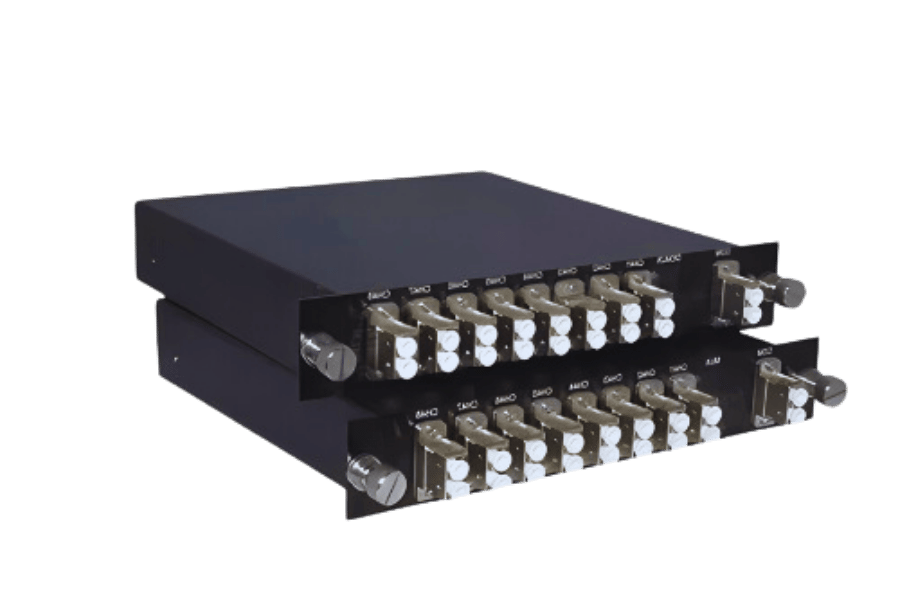
Understanding Multiplexers
A multiplexer, or MUX, is a digital circuit combining many inputs into one output line. It directs one of the inputs to the output by using control signals. The selection function is important because it allows large amounts of data to be sent over fewer paths. A typical multiplexer has ‘n’ input lines, ‘k’ control lines, and one output line where ‘k’ bits are needed to select between ‘n’ inputs such that ( n = 2^k ). Multiplexers are used in different applications like data routing in telecommunication networks, signal switching in audio/video devices, and bandwidth management in network equipment, which may have single fiber DWDM Mux designs.
Mux in Optical Networks
Multiplexers are necessary to manage the data flow on fiber optic cables in optical networks. They allow many light signals to be combined into a single beam by using wavelength division multiplexing (WDM) methods. WDM allows signals of different wavelengths to be sent at once, which greatly boosts the capacity of an optical fiber without needing more physical infrastructure. This not only maximizes the use of bandwidth but also quickens data transfer rates, thereby making these devices indispensable parts of any high-speed communication system. With the increasing need for information storage and transmission capacity, it becomes necessary that we have effective MUX systems within our fiber optics networks for robustness and scalability in telecommunication infrastructure.
How Mux Works with Multiple Signals
A multiplexer (MUX) works by picking one from several input signals and directing it to an individual output wire according to the binary indications of control lines. When the multiplexer receives several signals, which can be multiple bits wide, the control lines decide which input should go through at each instant. Each input signal is taken for examination and then sent out rapidly through a chosen output line. This process of choice happens with great speed that allows MUX to switch between different inputs smoothly. Such a feature is important for keeping data consistency while matching outgoing signal timing with incoming ones. Thus, communication systems can save bandwidth by this operation so that resources are assigned dynamically only towards active signals, thereby maximizing the system’s total performance as a whole.
What is a Demux?
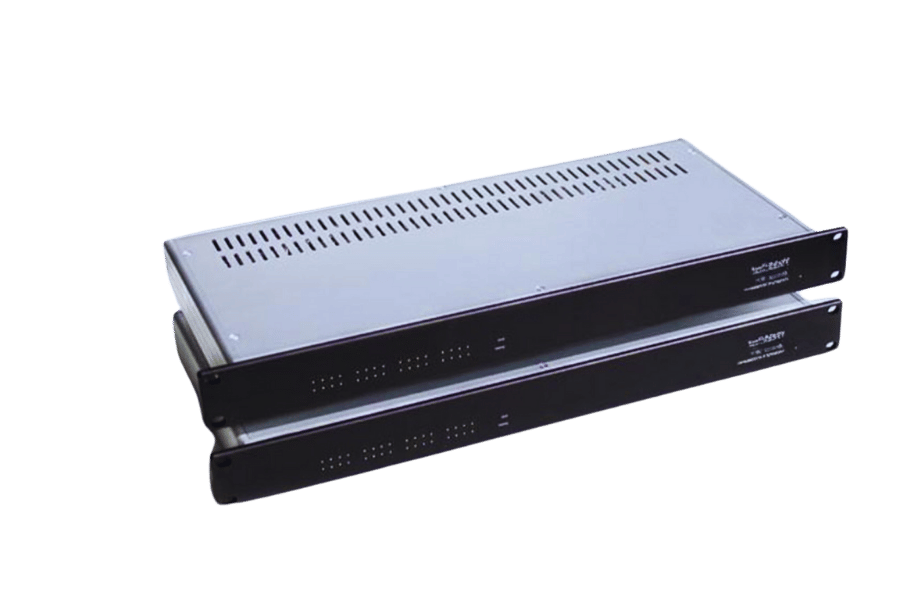
Examining Demultiplexers
A demultiplexer, or DEMUX, works opposite to a multiplexer and is found in optical network systems where it routes one input signal into many output channels. A DEMUX relies on control lines that identify the path for a given signal among possible output paths. The address is decoded by these control lines whenever an input signal arrives so that the DEMUX can send that signal through its assigned output line. This feature is vital in communication systems where data from one point must be efficiently sent to different ends. Bandwidth saving and improving overall data flow within network systems are possible by separating transmitted information into usable forms for various applications through demultiplexers.
Demux in Data Transmission
In data transmission, one of the most important things is a demultiplexer that allows you to share one stream into many channels without losing any information. Whenever data is sent through a network, a DEMUX takes the input signal, which has been combined together, and sends it where it should go according to control signals set in advance. By this means, we can ensure that each receiving device gets the right packets of data, thus keeping the communication system effective and reliable. Demultiplexers enable multiple devices to share a single source simultaneously, hence simplifying operations on networks while at the same time minimizing delays as well as improving the utilization of bandwidths. Various applications such as telecommunications require accurate functioning of demultiplexers to quickly deliver large volumes of data during multimedia distribution or broadcasting where speed is everything.
The Role of Demux in Optical Systems
The demultiplexer (DEMUX) is a significant component in optical systems, because it helps to distribute signals from one wavelength to another. Light is transmitted through fibre optic cables using multiplexing technique which combines many signals into a single stream by means of wavelength division multiplexing (WDM). Once combined, these mixed signals are separated by the DEMUX at the receiving end and each wave length is directed to its respective output channel. This allows for a maximum capacity of optical networks where speed is required so that throughputs are kept high, and all available bandwidths are used efficiently. In an optical system, if a demux does not function properly, then data integrity will be compromised since such a system may interfere with other signals, thus reducing overall performance. Demultiplexers enable seamless transmission of multiple data streams. Thereby, they are useful for long-distance communication networks in addition to being necessary for high-speed data center operations.
How Do Mux and Demux Work Together?
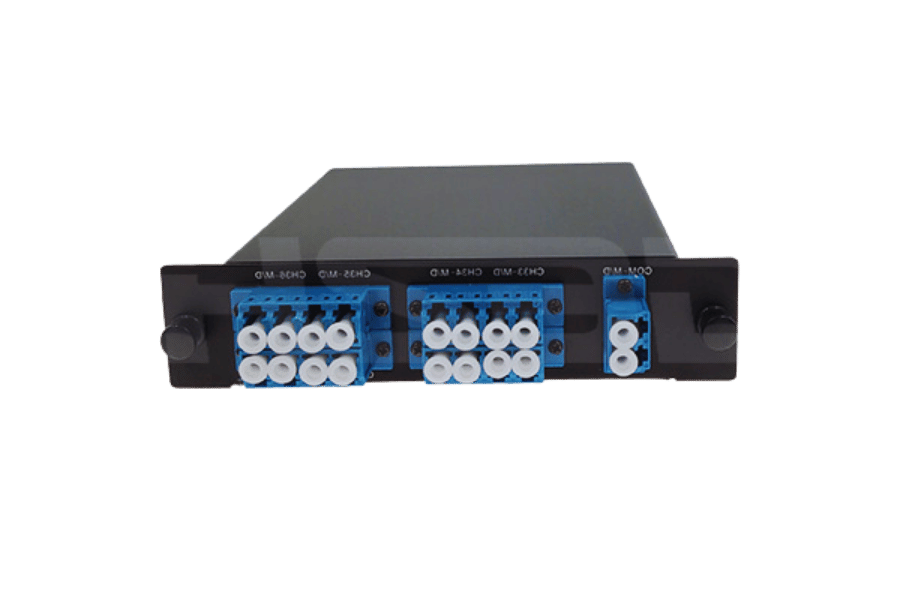
Integration of Mux and Demux in Networks
The combination of multiplexers and de multiplexer is necessary for effectively managing data in current communication systems. A Mux equipment merges many input signals into one output stream with the help of time division multiplexing (TDM) or wavelength division multiplexing (WDM) methods to better use bandwidth. On the other side of the transmission, Demux devices receive this combined signal and correctly break it apart into its original parts, each directed towards its intended destination. This interdependent connection allows for a smooth information flow, enabling high-capacity data transfer over different media. Mux works together with Demux to improve network performance, reduce latency, and ensure the reliable delivery of information through wide-reaching telecommunications infrastructures.
Applications of Mux and Demux
Telecommunications and data transmission systems use Mux and Demux devices in various applications. In telephony, they make it possible to send many voice calls over one channel resulting in a great improvement of the efficiency of lines. The same devices enable data centers to handle massive amounts of traffic by allowing for simultaneous connections while reducing congestion. In broadcasting, it is not possible to transmit good quality audio or video signals without Mux and Demux technologies that combine them together at first before transmitting them over the airwaves. Likewise, optical networks cannot function properly if they lack these two gadgets since they help integrate several data streams on different wavelengths, thus increasing bandwidth capacity and the performance of channels, which are passive systems. All this means that without these two things, our communication networks would be useless because we wouldn’t have any way of managing information effectively across different platforms through which such information is passed nowadays.
Benefits of Using Mux and Demux
In telecommunications and data transmission, Mux and Demux have many advantages. The first one is that they make channel efficiency bigger by allowing more than one signal to use a single communication medium, thus utilizing resources to the maximum. Secondly, they save costs because there is no need for extensive wiring or infrastructure when lots of data can be sent at once over devices used in optical networks. Also, these gadgets improve network scalability, which means that systems can expand or adjust according to growing data requirements without affecting their functionality. Furthermore, by reducing delays and ensuring dependable separation of signals, these appliances heighten the overall performance and reliability of networks, thereby becoming indispensable in modern communication systems.
What is WDM and How is it Used?
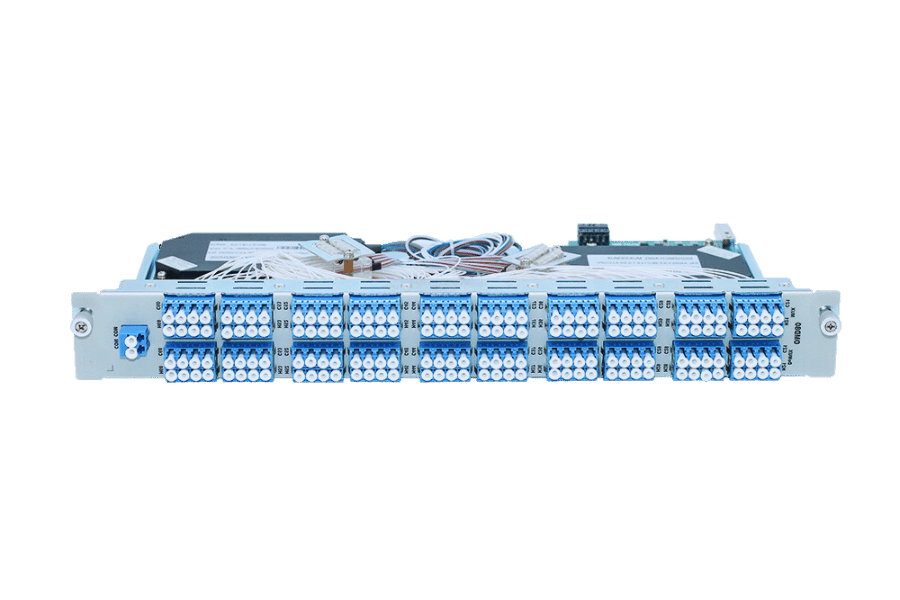
Wavelength Division Multiplexing Explained
Combining more than one wavelength onto a single optical fiber is done using Wavelength Division Multiplexing (WDM). This method increases the capacity of optical networks. Each light wave has its own signal, which makes it possible to send many signals at once without interfering with each other. It dramatically improves the bandwidth of the fiber since it can have multiple channels on the same physical medium. In long-distance communications, where there is a need for data traffic and optimization of network resources, WDM has become very useful. Depending on the channel spacing required, either Coarse or Dense form may be used- CWDM for broader spectrum and DWDM for more channels as well as closer together, which gives higher capacity.
DWDM and CWDM Technologies
Optical networking is based on two main technologies, which are Dense Wavelength Division Multiplexing (DWDM) and Coarse Wavelength Division Multiplexing (CWDM). However, they have different objectives depending on the network requirements.
Closely spaced wavelengths are used by DWDM (normally 0.8 nm apart) this allows for transmission of more channels (up to 160 or even more) through a single optical fiber. The reason behind this is that with such small spacing high capacity can be achieved which is very useful for long-haul communications where bandwidth demand is huge. Optical amplification and regeneration are some of the advanced capabilities typically found in DWDM systems; these features extend signal reach and improve reliability.
Alternatively, CWDM employs wider channel spacing (usually 20 nm apart), thus supporting fewer channels (up to 18) using less complex infrastructure that is cheaper, too. For example, when moderate bandwidth is needed over shorter distances, this kind of technology will be beneficial since it provides a low-cost solution with a simplified deployment process.
In summary what determines whether to use either DWDM or CWDM among other things like distance covered by the network links; required capacity as well budgetary allocations available for investment into the project.
WDM in Modern Optical Networks
Wavelength Division Multiplexing (WDM) has become a part of modern optic networks, which makes data transmission more effective and expands network capacity. This is achieved by enabling various wavelengths to carry numerous signals at once over one optical fiber thus increasing the usage of bandwidth exponentially. In backbone or metropolitan area networks where there is large amounts of traffic that needs to be handled efficiently, this becomes very necessary. To be specific, on 1310 nm signal transmission, it is important for service providers because WDM systems scale with fluctuating demands dynamically allocating bandwidth, hence allowing them to optimize the performance of their networks while reducing operational expenses. As much as we are seeing an increase in consumption rates for information around us, it still remains vital that robust communication infrastructures with high capacities should be created through the implementation of these technologies.
Understanding CWDM Mux
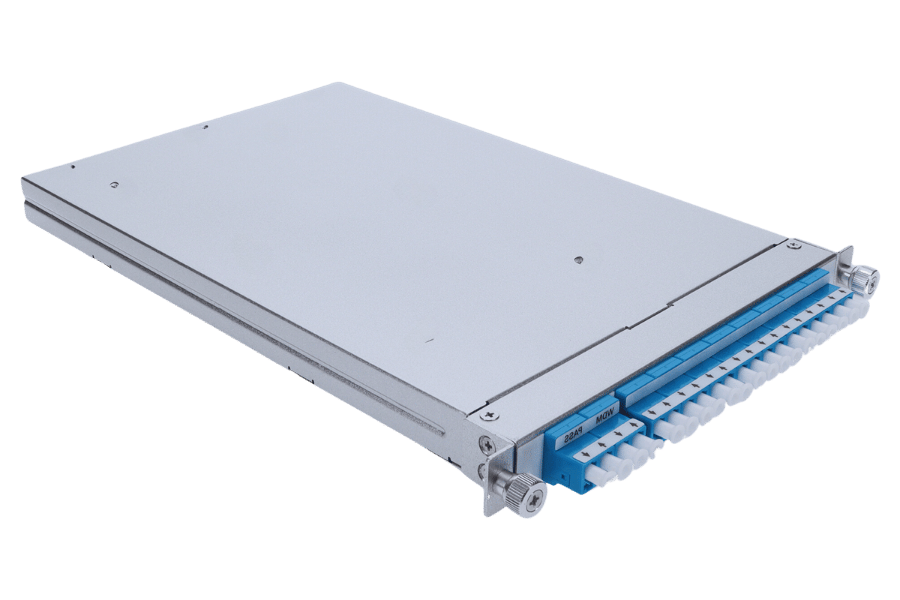
Introduction to CWDM Mux
Multiplexers are the core component of optical networks that combine multiple data signals into one fiber optic line. These devices work by using widely spaced channel wavelengths, usually ranging from 1270 nm to 1330 nm, for efficient transmission over short to medium distances. With CWDM MUXs network operators can make better use of existing fibers without having to undertake expensive infrastructure upgrades which is why they are suitable for metropolitan area networks and enterprise applications as well. Besides being passive in nature thus improving reliability while cutting down on maintenance expenses due to lack of active elements or extra power supplies needed for operation; this simple approachability combined with cost efficiency makes it ideal for various data communication needs where tight budgets and limited bandwidths prevail especially.
Advantages of CWDM Mux
- Cost Effectiveness: CWDM MUXs drastically cut down the requirement for a wide fiber infrastructure, which in turn results in lower capital expenses. Organizations can achieve greater bandwidth at low prices by using existing fiber lines and multiplexing more than one signal.
- Scalability of Bandwidth: It is possible to send many channels at once with different wavelengths assigned by CWDM hence increasing the overall capacity of the network used. This implies that service providers should be able to cater for future demands on data as they continue growing larger.
- Flexibility in Implementation with devices used in optical networks.: CWDM systems are designed such that they can easily fit into any already existing configuration for networks. Being passive makes them easy to install without causing much interference on ongoing operations hence best suited when quick actions need to be taken within various setups.
- Improved Reliability of Networks: In CWDM MUX architectures there are no active components which tend fail often leading high reliability along reduced maintenance needs. Such design has less points where things can go wrong thus enabling stable operation over long period in business enterprises and metropolitan areas.
- Reduced Latency: When signals have been multiplexed, many translations are needed, which creates delays. However, since everything is done at once through CWDM, there will be low latency levels. Users, therefore, get to enjoy continuous, faster communication speeds required by video conferencing, among other applications that demand real-time data transmission while gaming online.
CWDM Mux Demux Applications
CWDM (Coarse Wavelength Division Multiplexing) Mux Demux systems are used extensively in a wide range of applications because they can make the best use of bandwidth and reduce infrastructure costs. Some popular applications include:
- Telecommunications Networks: In metropolitan or long-distance optical networks, people always resort to CWDM solutions to help service providers enhance network capacity without investing additional capital in new fiber infrastructures.
- Data Centers: Inside data centers, CWDM enables device interconnection which helps with managing data traffic more efficiently while supporting rapid data transfer rates and storage solutions.
- Enterprise Networks: For organizations linking up different sites or locations, enterprise networks ensure a cost-effective network design that is also flexible enough to accommodate future growths in data traffic volumes and bandwidth requirements.
- Broadcast and Media: The broadcast industry uses this type of technology for transporting multiple video signals over one fiber so as to achieve efficient content distribution and management.
- Smart Cities & IoT: As cities become smarter, it becomes necessary to integrate various IoT devices which can be supported by CWDM; this allows us deal with huge amounts of connected infrastructural growth while at the same time managing bandwidth demands for massive data flows appropriately.
These examples show how versatile and effective CWDM Mux Demux systems are when deployed within contemporary network architectures.
Exploring DWDM Mux Demux
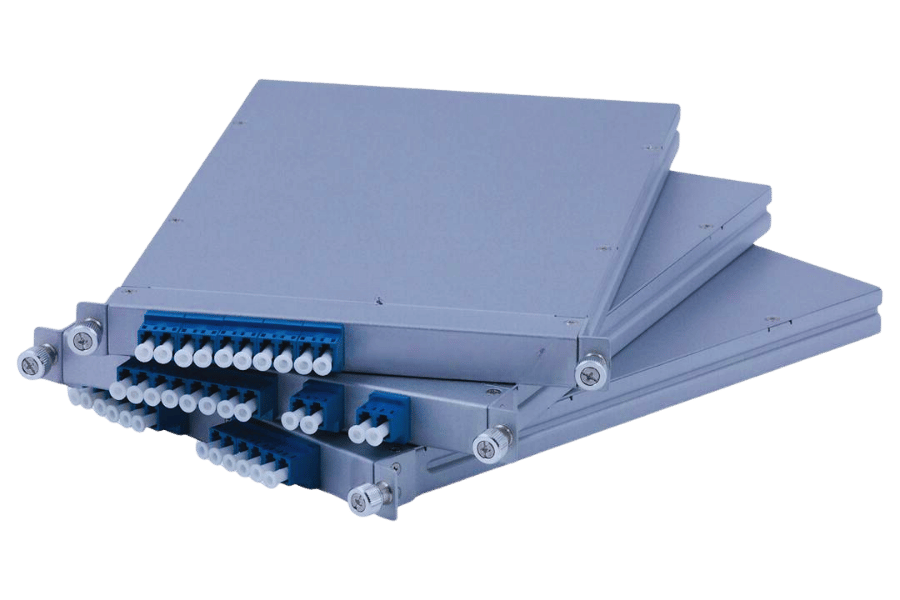
Introduction to DWDM Technologies
Dense Wavelength Division Multiplexing (DWDM) is an advanced optical networking technology that allows for large amounts of data to be transmitted using one optical fiber but through multiple wavelengths (or channels). This is done by enabling many signals to exist on the same medium without interfering with each other, therefore increasing bandwidth capacity by far beyond what can be achieved through traditional transmission methods. Usually, DWDM supports channel spacing as low as 0.8 nm, which is able to cater to up to 160 channels.
In order to optimize the use of current fiber infrastructure, multiplexers and demultiplexers are used in DWDM systems for combining and separating these wavelengths. Such a feature makes it perfect for high-capacity long-haul transmissions where there is substantial data traffic, like the telecommunications industry, data centers, or intercontinental cables. Moreover, adoption of this technology also improves network reliability and scalability thereby enabling operators meet growing demand for data services while keeping up with quality standards.
Not only does it serve such functions, but it also plays a key role in supporting emerging applications, including cloud computing, 5G networks, etc., where there is a need for high-throughput/low-latency communication systems. In general terms, though, DWDM represents one among many building blocks that have been employed towards the creation of modern-day optical communications infrastructure designed around solving real-world problems brought about by rapidly growing quantities of digital information being produced every day from various sources all over the globe.
How DWDM Mux Demux Works
In Dense Wavelength Division Multiplexers (Mux) and Demultiplexers (Demux) are important in DWDM systems because of their ability to combine and split optical signals. The goal of a multiplexer is to take multiple incoming data streams at different wavelengths and put them together into one signal that can be sent over an optic fiber; this includes single fiber configurations for DWDM Mux. This requires aligning the different frequencies very precisely so that they do not interfere with each other, which would cause problems with the signal.
On the other hand, a demultiplexer separates out all of those different frequency bands again when it reaches its destination point (receiver). Using optical filters and specialized technology, these devices can accurately pull apart each individual wavelength so that data can be routed to specific output channels as necessary. Without either one of these components — or both — high-capacity communications across long distances would become inefficient, if not impossible, altogether, within DWDM networks.
Applications and Benefits of DWDM Mux and Demux
They are utilized in different applications such as telecommunications, data center interconnects, and metropolitan area networks. These help in increasing the bandwidth greatly without adding more fiber infrastructure thus making the best possible use of what is already there. Among the advantages of using DWDM Multiplexers and Demultiplexers are more significant data transmission capacities, better spectral efficiencies as well as reduced overhead expenses through combining many streams of information into one. Furthermore, they make it easy to create adaptable systems that can grow with increasing amounts of information while still ensuring good levels of service quality.
Reference Sources
Frequently Asked Questions (FAQs)
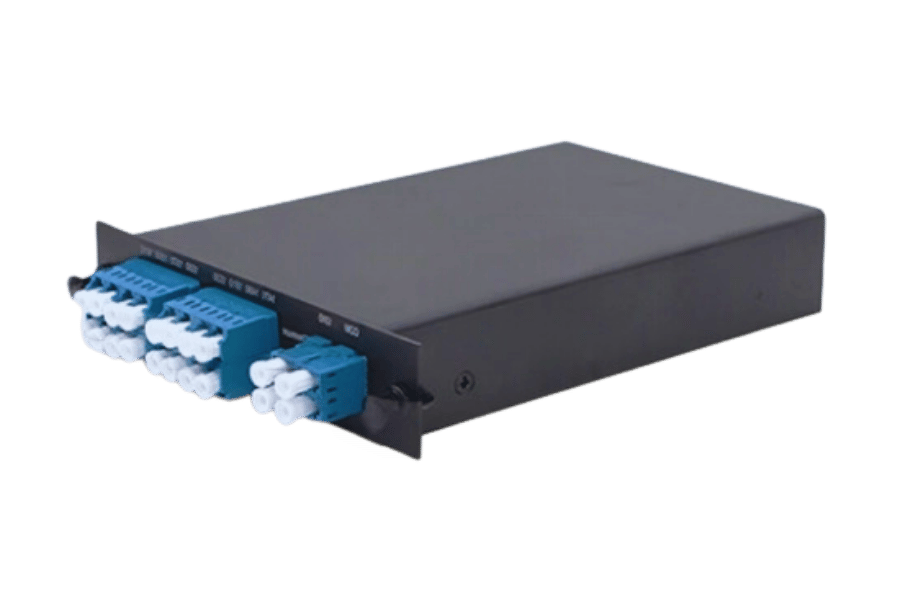
Q: What do you mean by mux and demux?
A: Described as MUX and DEMUX, multiplexer and demultiplexer are two devices that can combine multiple data signals into one signal (MUX) or divide a single signal into multiple data signals (DEMUX). These devices are indispensable in fiber optic communications, where they make it possible to transmit data over one fiber at the same time.
Q: How does a mux work in fiber optics?
A: In essence, what happens is that several optical signals are mixed together on one fiber (multiplexing), which are then separated out into individual signals again at the receiving end (demultiplexing). Through this method, bandwidth utilization is increased, hence enabling efficient transmission over a single fiber.
Q: What is single fiber mux and why use it?
A: A device called singlefibermux combines many optical signals onto a single fiber so as to maximize the use of available fiber infrastructure. It helps increase the efficiency and capacity of data transmission in FTTX Networks.
Q: What are the benefits of using a Fiber DWDM Mux Demux?
A: The advantages provided by employing Fiber DWDM(Dense Wavelength Division Multiplexing)MuxDemux include more bandwidth than before, better routing of information through networks, and the ability to send numerous optical signals simultaneously over one cable. This also optimizes resource usage, such as fibers, thereby saving costs.
Q: What features to look for in an LGX dwdm mux or demux?
A: Some important characteristics to consider while purchasing an LGX DWDM(Multiplexor /demultiplexer)are low insertion loss, high channel isolation, polarization-dependent loss(PDL), ITU compatibility, etc. This equipment should also support multiple channels and give reliable performance under different conditions.
Q: How does a demultiplexer function in an optical network?
A: A demultiplexer functions in an optical network by receiving one input signal, which is combined and separated into several data signals so that each is directed to its destination through the same fiber at a time.
Q: What are the typical applications of an 8-channel mux demux?
A: Fiber DWDM systems use 8-channel mux demux to increase transmission capacity, allowing eight different data channels to be sent and received over one fiber. This is very applicable where networks need high throughput and efficient use of fiber infrastructure.
Q: Why is low insertion loss substantial in a multiplexer and demultiplexer?
A: Insertion loss is important for any multiplexer or demultiplexer because it directly affects signal strength. A lower loss means more optical power will be saved during multiplexing/demultiplexing operations, ensuring clearer and stronger data signals.
Q: What is the significance of 100GHz spacing in DWDM systems?
A: The significance of 100GHz spacing in DWDM systems lies in frequency separation between neighboring channels, whose aim is to minimize interfering with other channels so that many optical signals can be transmitted over a single fiber with the highest fidelity possible. Also, reliability should be at the maximum level.
Q: What role does a transceiver play in mux and demux applications?
A: In mux and demux applications, the transceiver transmits and receives data signals. It converts electrical signals into optical ones for transmission purposes, which it then receives back again from optics into electricity. When it comes to communication efficiency within fibre optic networks, high-quality transceivers like QSFPtek would be appropriate.
